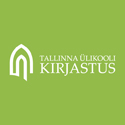Eesti-läti koodikopeerimine: adaptsioon ja impositsioon [Estonian-Latvian code-copying: adoption and imposition]
Abstract
The aim of the current article is to give an overview of Estonian-Latvian code-copying based on naturalistic language data. Th e article is based on my MA thesis, "Eesti-läti kakskeelse isiku keelekasutus" (Estonian-Latvian Bilingual Speech). I have used Lars Johanson’s code-copying framework to analyze the data. In the code-copying framework code-copying means that items and patterns from the model code are copied into the basic code. My aim was to observe copying in both directions and this framework is applicable in both copying directions. Th e copying process L1 > L2 is called ‘imposition’ (in this case Estonian > Latvian) and L2 > L1 copying is referred to as ‘adoption’ (in this case Latvian > Estonian). Code-copying can be classified as global, selective or mixed copying, according to the degree of copying involved. The data were collected in February 2013 and from 14 June to 20 September 2015 by recording the natural conversation of an ethnic Estonian informant (b. 1935) who has lived in Ainaži, Latvia for almost 40 years. She is fl uent in both Estonian and Latvian. The length of a conversation session is 50–60 min. The results show that code-copying occurs in both directions and global copies were used the most of all the types of copying.The most copied type of content words were nouns, but there were also some adverb and verb copies. Th e reasons for copying globally in both directions were semantic specifi city, pragmatic prominence and the similar origin of some words both in Estonian and Latvian. Very few discourse markers were copied in adoption, with more occurring in imposition. Discourse markers were used to direct, stress and express emotions. There were very few selective and mixed copies, regardless of direction. No mixed copies occurred in adoption. Code alternation occurred in both directions. Until now Estonian-Latvian bilingualism has not been studied by modern contact-linguistic research and using naturalistic language data. Usage of this method would provide a basis for further research of Estonian-Latvian bilingual speech.
Full Text:
PDFDOI: https://doi.org/10.22601/PET.2016.01.05
Refbacks
- There are currently no refbacks.
Published by / Kirjastaja:

ISSN 2504-6616 (print/trükis)
ISSN 2504-6624 (online/võrguväljaanne)
